
For building furniture, I prefer wooden layout tools. They’re lightweight, easy to maintain and easy to make. Even more important than those three qualities is that their accuracy is perfect for woodworking.
Machinist tools in the woodshop can make you chase your tail at times, trying to fix problems that aren’t there and working to levels of precision that are are unnecessary for even the fussiest furniture.
So when I see a wooden layout tool in an old print that I’ve never encountered, it’s only a matter of time before I make one to try out in the shop.
A couple of years ago, Jeff Burks sent me a series of images, many of which I’d seen before. But what I hadn’t seen is what the images all had in common: an extinct square with a long and decorative blade, a short stock (or handle) that was heavily moulded and a hang hole.
The square seems most common to Northern Europe, especially the Netherlands and Germany. And most of the images of it (so far) are circa 16th and 17th century. The square – and I don’t even know if that’s the correct word to describe the tool – was common enough that it was used as a symbol for a joiner or cabinetmaker in shop signage and heraldry.
This week I’ve built four versions of this square, and I have put them into use in my shop. They do two things really well: They are an excellent straightedge, and they are a compact square that is effective when dealing with dressed (not rough) boards.
I have a lot of notes on this tool that have accumulated during the last two years. I considered pitching this as a story to Popular Woodworking Magazine, but I have too much material to cover it effectively in a magazine article. So instead, I’m going to post it all here on the blog in several parts.
Let’s first look at some historical images that have this straightedge/square and discuss what is shown there.
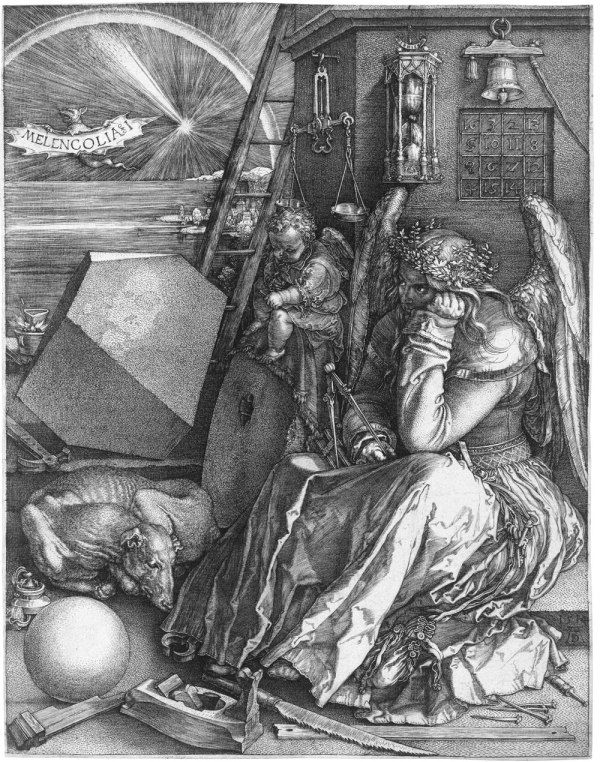
My favorite image of the square is in Albrecht Dürer’s “Melencolia I,” a 1514 engraving that shows the tool next to a wooden smoothing plane at the bottom left of the image. Dürer, who is perhaps the most important artist of the Northern Renaissance, traveled all over Europe. He was based in Nuremberg but traveled to (and was influenced by) Italy and the Netherlands.
The straightedge/square is shown in the same plane as the handplane, so if we assume the plane is about 9” long, here are the roughish dimensions of the layout tool: The stock of the square is 1” thick and 2” wide. The blade is 1/4” and extends out of the stock about 7”.
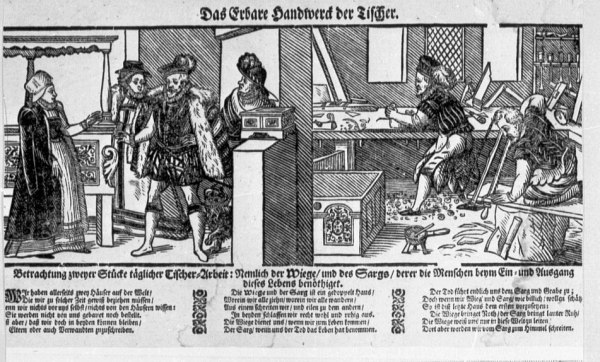
This German woodcut from the mid 16th century by Jost Amman has been copied a number of times. It’s from a series of engravings representing the different crafts and was made in Nuremberg. The straightedge/square is shown upright and next to a try square. What is notable about this version is that its moulding profile is quite different. The stock is widest at the end and narrows toward the blade.
Also, the blade of the tool has a different profile – the tapering and decoration are confined more to the end of the tool. It’s difficult to scale this tool from its surroundings, but I think it’s fair to say its stock is thicker than the Melencolia I square, but the blade is about the same length.
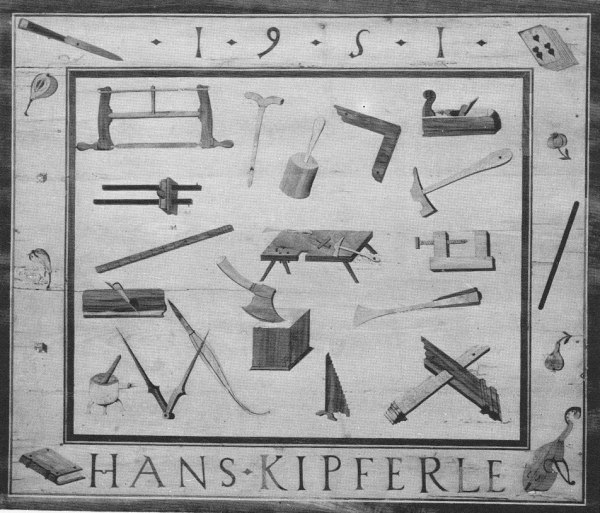
This 1561 piece of marquetry is a tabletop from a guild table that is now owned by the Stadtmuseum in Bolzano, in Northern Italy. When it comes to representations of woodworking tools, I think it’s best to trust woodworkers. So this one has particular merit.
The straightedge/square is shown in the bottom right of the image – and the blade of the tool is crossed with the blade of another similar tool. Proportionally, this tool has a stock that is similar to the Nuremberg image above, but the blade has a shape that is more like the Dürer illustration.
What I think is important about this marquetry illustration of the tool is that it is shown in a grouping with a try square, so it’s possible the tools were distinct from one another – both are as important to the work as a bowsaw, glue pot or workbench.
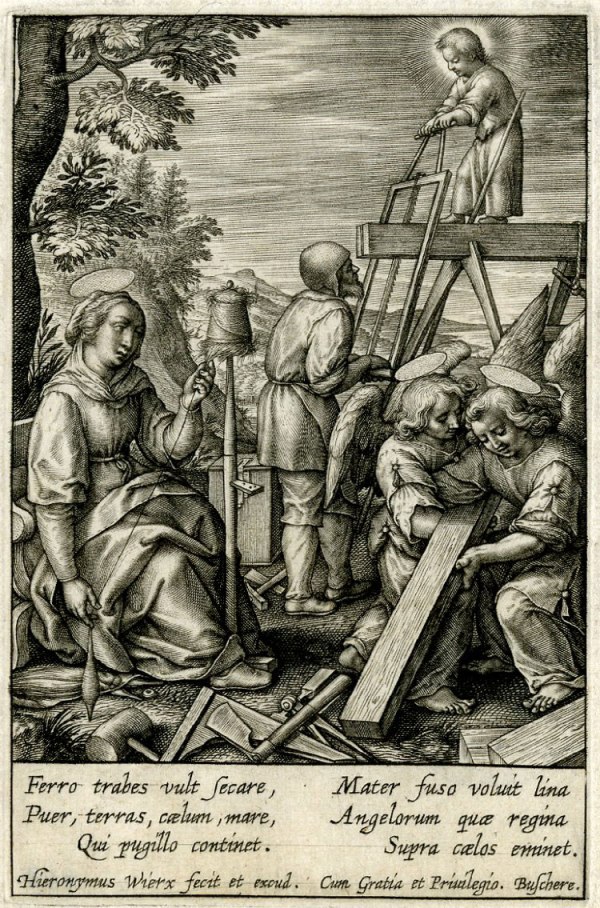
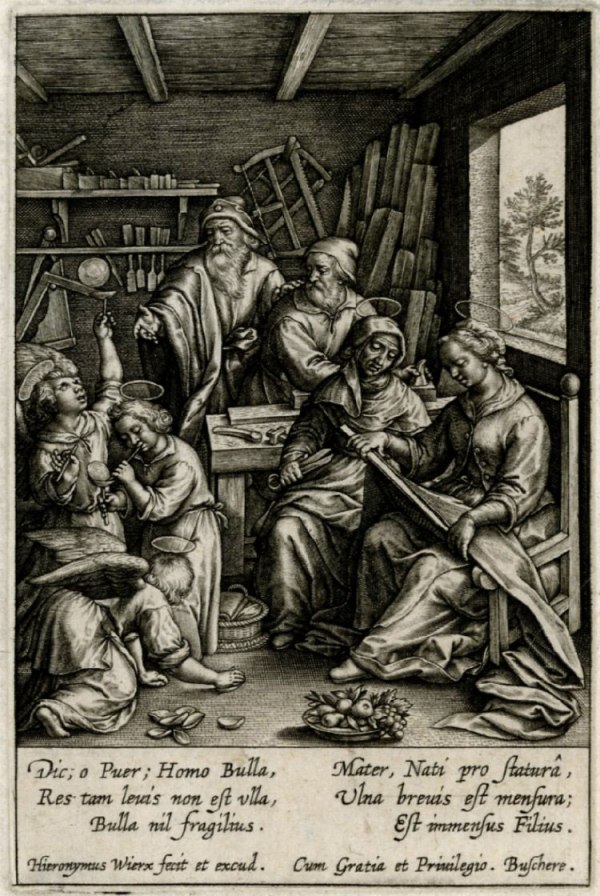
These images from before 1619 by Hieronymus Wierix are held by the British Museum and are considered “Netherlandish.” Both of these images depict scenes from the life of Christ and show a different form of this straightedge/square that looks more like a SpeedSquare than the forms shown elsewhere. The stock is longer and thinner. And the blade is notably wider.
Yes, but what about England? Did the English use this tool?
Kinda. Sorta. Maybe.
— Christopher Schwarz